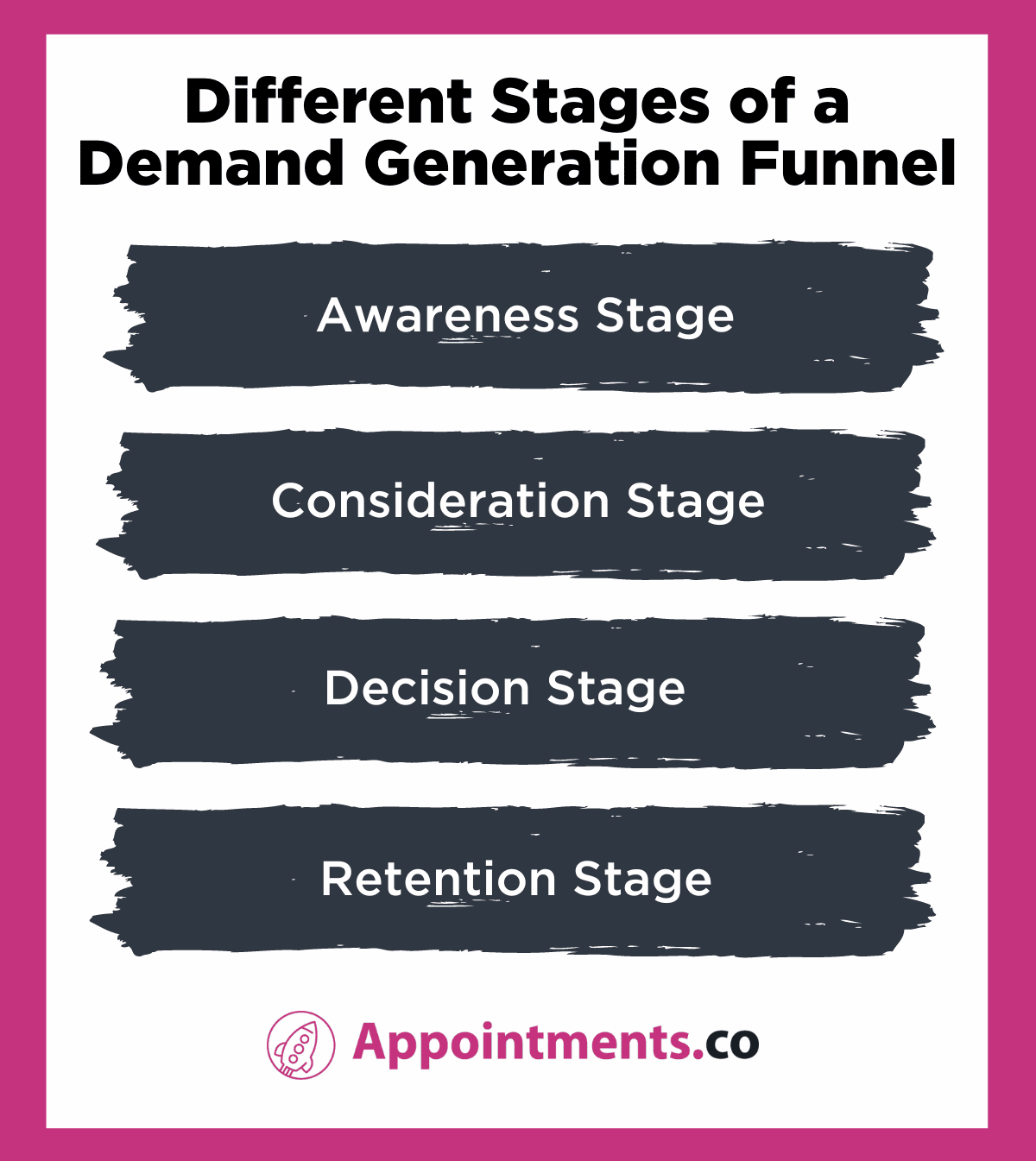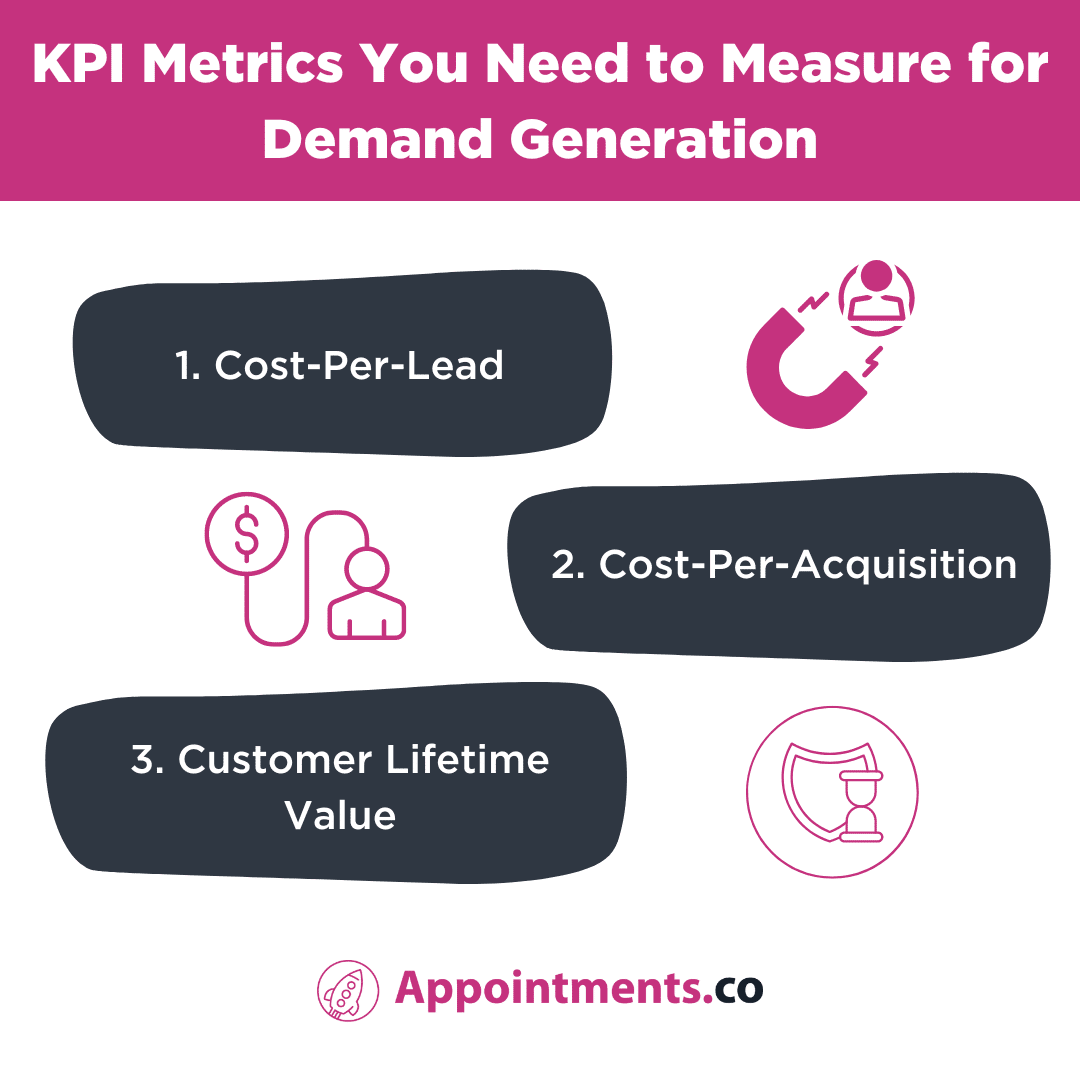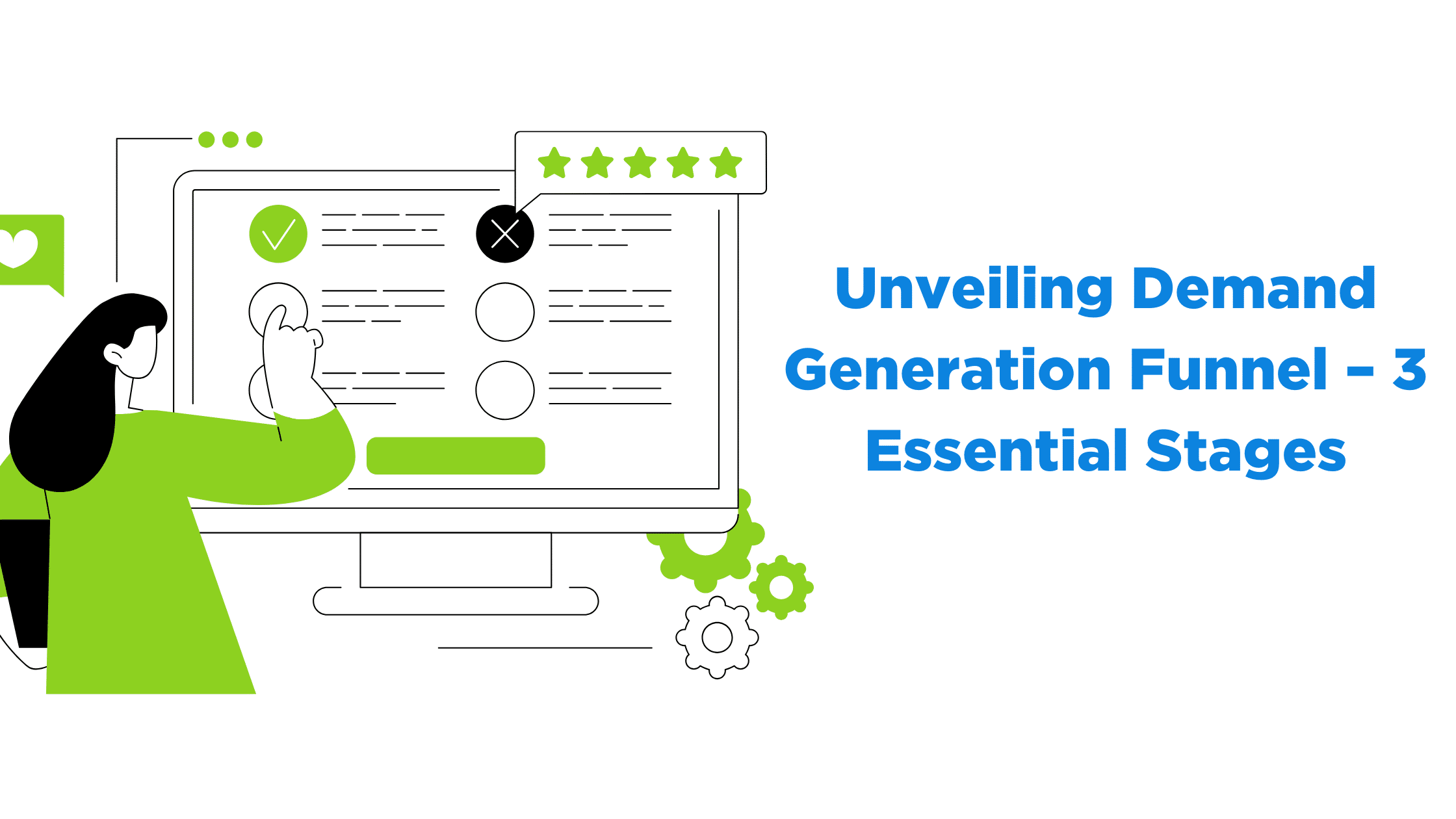Any marketer or advertiser needs to be familiar with the buyer’s journey. It helps you understand how a buyer feels at every step of the way. It also helps you put yourself in the shoes of your target audience. This way, you’ll be able to better understand their needs and what would appeal to them.
The goal is to become more effective in influencing them to go from just prospects to actual paying customers. To do so, you need to be familiar with the demand generation funnel. But what is a demand generation funnel and how does it help you become more successful in your marketing strategies? Let’s find out!
In this article,
- What is Demand Generation?
- Demand Generation vs. Lead Generation
- Defining Your Audience
- Different Stages of a Demand Generation Funnel
- KPI Metrics You Need to Measure for Demand Generation Funnel
What is Demand Generation?
Demand generation is the process of engaging your target audience to generate interest in the products and services that you offer. It’s a holistic marketing strategy that works with multiple channels to generate leads and influence the entire customer lifecycle.
It also focuses on adding value to the customer and making sure that you generate a need for your products and services.
Demand Generation vs. Lead Generation
Demand generation focuses on attracting new visitors to your website and introducing how you can be a solution to their problems. It focuses on increasing brand awareness and helping you build trust with your target audience. This helps you grow your audience by sparking interest in them.
In contrast, lead generation converts your audience into qualified leads. It focuses on collecting contact information and actively nurturing qualified leads. The ultimate goal for this is to convert leads into paying customers.
Defining Your Audience
To create an effective and efficient demand generation funnel, you need to have a good understanding of your target audience. This is why creating a buyer persona is an important step before figuring out your demand generation strategy.
A buyer persona is a detailed description of who your ideal customer is. Think about who this person is, what kind of person are they, and what is their background. Think about specific characteristics like the following:
- Age
- Gender
- Hobbies
- Occupation
- Educational level
- Income
What will push this persona to buy your products or avail of your services?
Make sure that the sales team is kept in the loop when creating a buyer persona. You would want a persona that everyone on the team agrees with. This eliminates any confusion when establishing goals and coming up with strategies.
Different Stages of a Demand Generation Funnel

1. Awareness Stage
This is located at the top of the funnel. Your only focus at this stage is to get your target audience to know that you exist. You need to identify these prospects and find ways how you can introduce who you are to them.
Remember that you shouldn’t sound sales-y at this early in the process. If you do, you’ll be scaring off more customers than you’ll get. Instead, focus on educating your audience on how to solve their problem, whether that solution involves you or not isn’t important for now.
To do this, it’s important to create high-quality content that your target audience will appreciate. The more relevant and helpful content that they see from you, the more they’ll be acquainted with your brand. The more they get to know you, the more they’ll trust you and see you as an authority in your industry.
Once your target audience knows who you are, it’s important to slowly work your way into creating a relationship with them.
So okay, you’ve established that they have a problem and that you know a solution. It’s not important to become that solution for them.
Once they start becoming curious about who you are and what you can offer, you have to be there to supply the information they need. Stay informative and helpful and avoid being too promotional.
2. Consideration Stage
In this stage, your curious prospects have now become Marketing Qualified Leads (MQL). They would want to know more about you and how you can help with their problems.
Once they gather enough information and are convinced that you’re the right one for them, they are converted to Sales Accepted Leads (SAL). They can also be called High-Quality Leads. This means that you’ll be passing them on to the sales department.
3. Decision Stage
This is the final stage where the prospect decides whether your products and services are the right solutions for them or not. Your prospects are now called Sales Qualified Leads (SQL).
In this stage, it’s essential for you to highlight why you are better than your competitors. Show them why you’re a better choice than anyone else in the market. Do you offer more value than they do? Do you have better customer service? Do you go the extra mile to make sure your customers get the best service possible? Why should your customers choose you?
4. Retention Stage
Once you’ve closed the deal and converted your prospects to paying customers, it’s important to find ways to retain them as such.
Keep supplying them with information that is relevant and useful to them. Create a rewards program to incentivize customers to remain loyal to your brand. Reward customers who have been with you for a longer time. Ask your customers for feedback on how you can make your products and services better for them.
Demand generation never stops because you constantly need to engage your customers and provide them with valuable content.
KPI Metrics You Need to Measure for Demand Generation Funnel

1. Cost-Per-Lead
Cost-per-lead is calculated by dividing your advertising cost by the total number of leads generated from your marketing strategies. This metric shows how much you’re spending on average per marketing effort. This gives you an idea if your efforts are paying off. If you see that you’re spending more than it’s worth, then it’s time to reevaluate your strategy.
2. Cost-Per-Acquisition
Cost-per-acquisition is calculated by dividing your variable marketing cost over a certain time period by the number of new customers you have. Variable marketing cost pertains to the money spent on a particular ad platform.
This metric helps you determine your return on investment. It’s used to measure the cost of acquiring a new paying customer through a specific marketing effort.
3. Customer Lifetime Value
Customer lifetime value is calculated by getting the average purchase value and multiplying that by the average number of purchases.
Knowing how much money you earn from each new customer helps you assess the profitability of your marketing campaign.
Key Takeaway
Creating a demand generation funnel is a great way to visualize how you’re going to plan out your strategy in the customer’s journey. It helps you build brand awareness and establish relationships with customers so they’ll keep coming back to you.
To create an effective demand generation funnel, you must first understand your target audience. This step will guide you throughout the whole process of coming up with strategies that cater to your customer’s specific needs. It helps you visualize and focus on your goals every step of the way. Also, remember to measure your progress consistently. This helps you identify whether a marketing effort is worth investing in or not. It also helps you identify which strategies work well and which ones need more attention.
If you have been looking for services that can help you boost your business opportunities, and grow your business to the next level, make sure to reach out to us to learn more about our services.
Related Posts:
- Top 10 Demand Generation Best Practices to Maximize ROI
- Lead Generation vs Demand Generation
- Demand Generation – The Ultimate Guide with 9 Proven Strategies
Illustrations by Storyset



